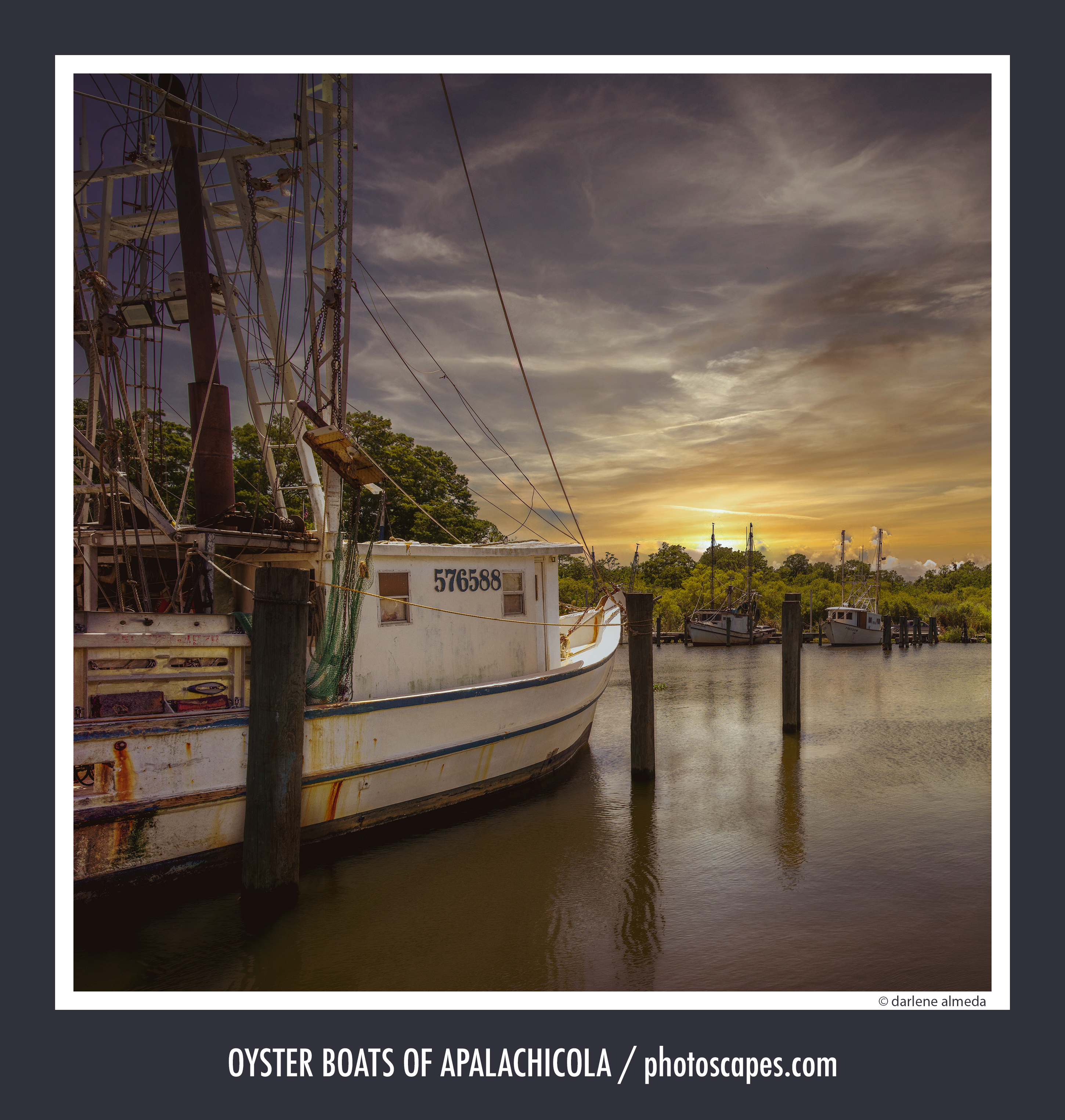This image was taken at a quiet dock in the quaint town of Apalachicola on the Florida Panhandle. I used the Hasselblad 907x 50c camera with the XCD 28/4 P (28P) lens and a small flash to help balance the light on the boat in the foreground. I had rented the 28P from LensRentals since it was a new release and unavailable for purchase.
Apalachicola holds a special place in my heart, and if I ever decide to move a bit west of my current home, this would be at the top of my list. The shoot was a casual walkabout beginning about an hour before sunset, immersing myself in the scene of boats lined up after a day’s work. Instead of focusing on the photography process, I thought it might be interesting to share a bit about Apalachicola’s rich history.
Apalachicola’s name originates from the indigenous people who inhabited the region before European settlers arrived. It is derived from the Apalachicola tribe, a group related to the Creek Confederacy, and their language, which belongs to the Muskogean linguistic family.
The area is renowned for its rich oyster beds, where generations of families have made their livelihoods. The history of oyster boats in this area is a tapestry woven with threads of resilience, tradition, and the undying spirit of a community bound to the sea.
It all began in the early 19th century when settlers discovered the abundant oyster reefs in Apalachicola Bay. These early pioneers quickly realized the potential of this natural bounty, and the first rudimentary oyster boats were crafted from local cypress wood. These early vessels were small and simple, with flat bottoms to navigate the bay’s shallow waters.
As the demand for oysters grew, so did the sophistication of the boats. By the mid-1800s, Apalachicola had become a bustling hub of the oyster industry, with dozens of vessels plying the waters daily. These boats, known as “scow sloops,” were built to be sturdy and efficient. They featured expansive decks to accommodate the large piles of oysters harvested by the oystermen. The sloops were equipped with long tongs, operated by hand, to reach down and rake the oysters from the beds.
The oyster boats became iconic symbols of the town’s industrious spirit. Each boat was a work of art, lovingly crafted by skilled shipwrights who understood the unique challenges of the bay’s waters. Families would often pass down their boats from generation to generation, each vessel bearing the marks of years of hard work and countless stories.
In the late 19th and early 20th centuries, the oyster industry in the area faced numerous challenges. Overharvesting and environmental changes began to deplete the once-bountiful oyster beds. In response, the community rallied together to implement conservation measures. Oystermen started using smaller boats and practicing more sustainable harvesting techniques, ensuring the survival of the oyster population for future generations.
The Great Depression brought hard times, but the resilient spirit of the oystermen and their boats endured. Despite economic hardships, the boats continued to sail, weathered but proud. During World War II, the oyster industry saw a brief resurgence, as oysters became a valuable commodity for the war effort. Now outfitted with small engines, many played a crucial role in supplying the nation with this nutritious food source.
In the post-war years, oyster boats underwent another transformation. Modernization brought new materials and technologies, with fiberglass and aluminum replacing the traditional wooden hulls. Despite these changes, the essence of the oyster boats remained the same—a testament to the town’s enduring connection to the sea.
Today, the oyster boats are a blend of old and new. Some families still maintain their ancestral vessels, lovingly restoring them to their former glory, while others embrace the advantages of modern boat designs. The boats continue to be vital to the town’s culture and economy, supporting a new generation of oystermen committed to sustainable practices.
Every sunset, as the oyster boats return to the dock, they carry the legacy of Apalachicola’s rich history. The boats are more than just tools of the trade; they are symbols of a community’s resilience, a living link to the past, and a beacon of hope for the future. As the boats gently rock in the bay’s waters, they tell the story of the area—a story of tradition, perseverance, and the timeless bond between the people and the sea.

